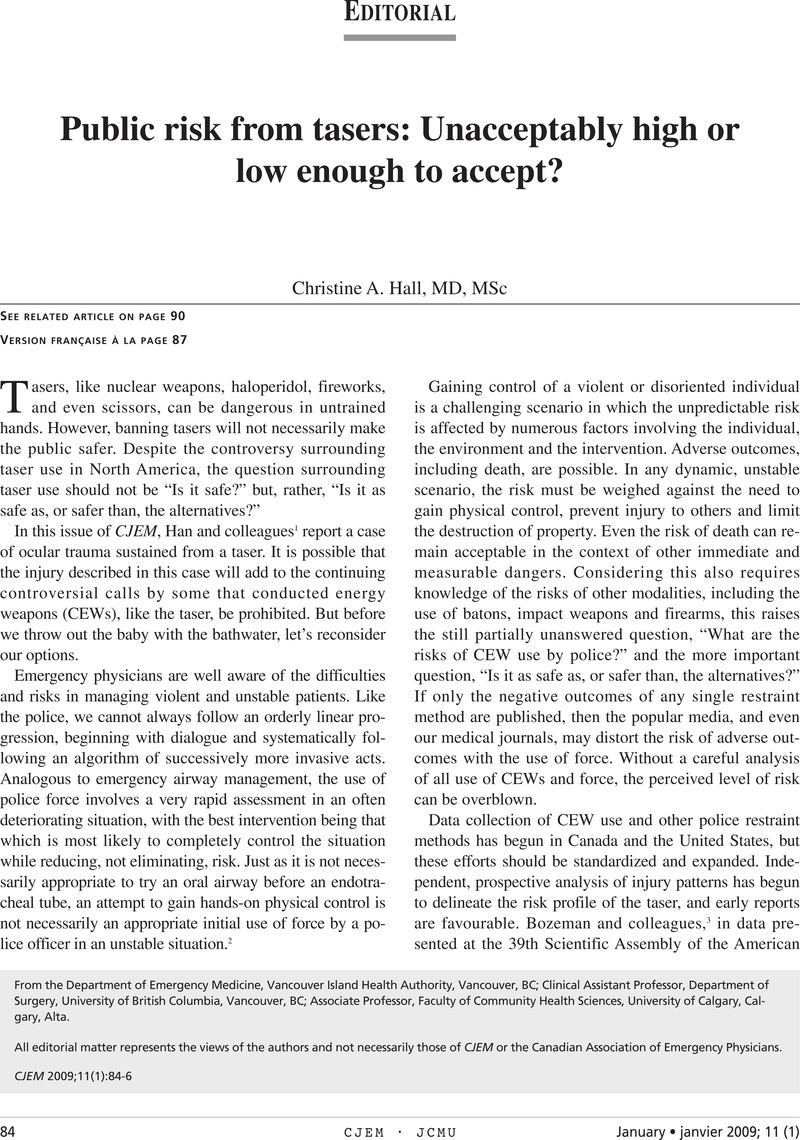Crossref Citations
This article has been cited by the following publications. This list is generated based on data provided by Crossref.
Alpert, Geoffrey P.
and
Dunham, Roger G.
2010.
Policy and Training Recommendations Related to Police Use of CEDs: Overview of Findings From a Comprehensive National Study.
Police Quarterly,
Vol. 13,
Issue. 3,
p.
235.
Jauchem, James R.
2011.
Pathophysiologic changes due to TASER® devices versus excited delirium: Potential relevance to deaths-in-custody?.
Journal of Forensic and Legal Medicine,
Vol. 18,
Issue. 4,
p.
145.



